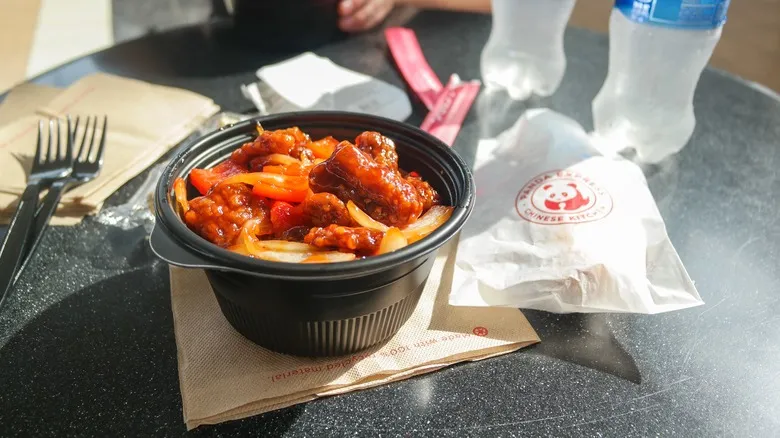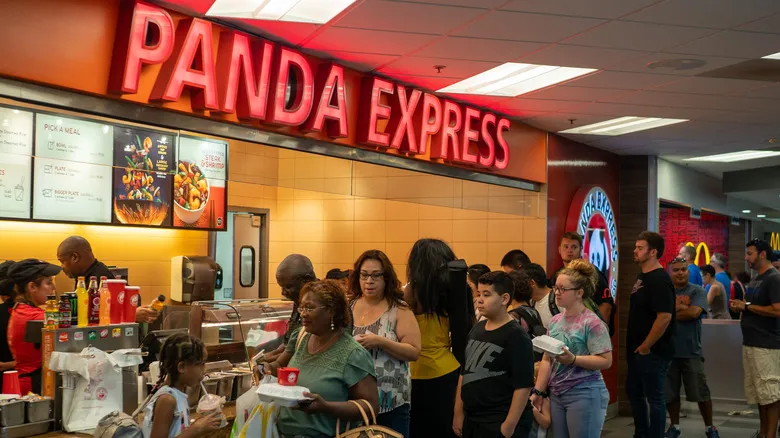The history of Panda Express

In 1973, Andrew and Peggy Cherng, along with Andrew's father, chef Ming-Tsai Cherng, launched a small restaurant named Panda Inn in Pasadena, California. Ming-Tsai, who hailed from Yangzhou, China, had gained experience working in kitchens in Taipei and Yokohama during the 1950s and 1960s. In 1972, Andrew assisted his father at Ting Ho in Los Angeles. The family later opened four additional Panda Inns before debuting the first Panda Express in the Glendale Galleria mall in 1983.
During the early 1980s, Asian-American cuisine as a fast food option was quite limited. The Cherngs were pioneers in utilizing computers and menu data analysis from the outset, and they implemented wellness and business training programs for their staff almost immediately. This intentional, tech-savvy approach contributed to the restaurant's rapid success.
However, it is the food that truly attracts customers to Panda Express. The aim was not to replicate authentic Chinese dishes but to create Chinese American cuisine that resonates with a broad audience. Andrea Cherng, the daughter of Andrew and Peggy and the company's CMO, shared with Business Insider that the restaurant embodies a longstanding tradition of Chinese chefs leveraging their culinary expertise to craft dishes that cater to American tastes. This legacy has continued beyond Ming-Tsai's time in the kitchen. In 1987, chef Andy Kao, originally from Taiwan, developed the restaurant's iconic orange chicken, drawing inspiration from Hunan province dishes. It remains a favorite and is widely imitated—there's even a version available at Trader Joe's that you can easily enhance.
Why Panda Express works

Although still operated by a Chinese immigrant family—without any franchised locations outside of licensed university settings—and utilizing a kitchen that continues to create innovative dishes rooted in traditional methods, the chain frequently faces discussions about culinary authenticity. However, there is no shortage of Asian-American food writers who advocate for the final product.
As Ian Joo recently noted in The Michigan Daily, much of what is now recognized as early American Chinese cuisine (think chop suey or egg foo young) emerged from waves of Cantonese immigrants striving to establish themselves in late 19th and early 20th century America. They combined traditional dishes with locally sourced ingredients to cater to a culturally diverse clientele. This legacy is what Panda Express successfully draws upon. Is it truly authentic Chinese cuisine? Not quite. Is it authentic American Chinese cuisine? Absolutely, according to its supporters, like Joo.
Due to the ongoing expansion and success of the Cherng family’s restaurants, they recently renovated and upgraded the original Panda Inn in Pasadena, which started it all. The 51-year-old establishment reopened this month with luxurious new interior designs, authentic dishes crafted by chefs from Yangzhou (where Andrew's father, Ming-Tsai, grew up), and a variety of amenities, including a sushi bar that reflects the family's experiences in Japan. According to the restaurant's website, this upscale transformation symbolizes the family's long journey and "a son's tribute to his father." What could be more quintessentially American than that?
Recommended

How Frozen Hot Chocolate Became A Pop Culture Phenomenon

The 2 Names Starbucks Almost Had Before They Got It Right

What Makes Hawaii's Kalua Pork Unique?

The Origin Of Pavlova Is Just As Complicated As The Dessert
Next up





